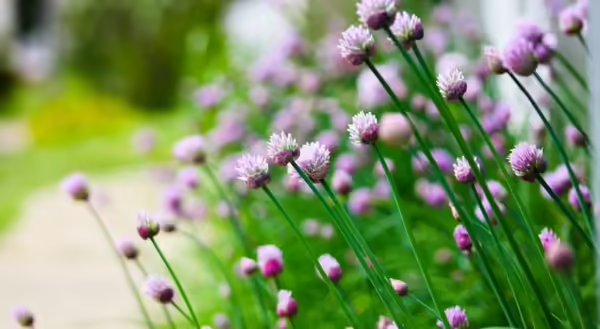
Adding new plants to a garden every year is hard on the back, and the pocketbook.
Perennial herbs make great additions to any garden or landscape.
Serving a dual purpose—beauty in the landscape and culinary uses in the kitchen— perennial herbs can save you money and labor. When added to existing landscapes and flower beds, herbs offer a unique mix of fragrances, textures, and colors in the garden.
Perennial herbs come back every year following the winter dieback of the previous year's growth. Some are small woody shrubs, others are herbaceous plants. Hardy perennial herbs are easy to grow and will survive winter in our area—Zone 5.
Chives
Allium schoenoprasum grow in 12-inch grass-like clumps. The purple-pink flowers are both decorative and edible. The leaves can be harvested all summer, but the flavor is best in young growth.
Lemon balm
Melissa officinalis has strongly lemon-scented heart-shaped foliage reaching 1 ½ feet tall. To prevent it from self-seeding in the garden, remove spent flower stalks before the seeds mature.
Oregano
Origanum vulgare grows 2 feet tall with sprawling branches covered with small, round leaves. The petite pink flowers bloom in the summer.
Sage
Salvia officinalis has oval, gray-green foliage, and a woody stem. It is a small evergreen shrub that needs good drainage to avoid root rot.
Thyme
Thymus vulgaris is a low-growing mound, reaching 6 to 12 inches tall. The pink, tubular blooms appear in early summer amongst the dark green, fragrant foliage.
Other perennial herbs are lovage, lavender, salad burnet, French tarragon, winter savory, and mint. Use caution when growing mint; plant it in a container to avoid it taking over the garden!
Some plants are also referred to as ‘tender perennials’ which are not winter hardy in colder climates. This group includes rosemary, lemon verbena, lemongrass, and scented geraniums. To grow them as perennials in Illinois, overwinter them indoors.
For optimal growth and flavor, replicate the Mediterranean growing conditions of these perennial herbs.
Growing in warm temperatures and well-drained soils of the Mediterranean region, these plants are adapted to dry locations so they are quite drought tolerant. And with very few pest and disease problems, they tend to be low-maintenance plants. Some herbs will tolerate partial shade, but the majority perform their best, and produce their best flavors, when receiving 6 to 8 hours of sunlight each day.
ABOUT THE AUTHOR: Brittnay Haag is a Horticulture Educator with University of Illinois Extension, serving Livingston, McLean, and Woodford Counties. Her work focuses on youth horticulture education, specifically through school gardens and Jr. Master Gardener programs. Brittnay provides leadership for three county Master Gardener programs and is responsible for developing community programs and providing expertise in horticulture and environmental sciences.